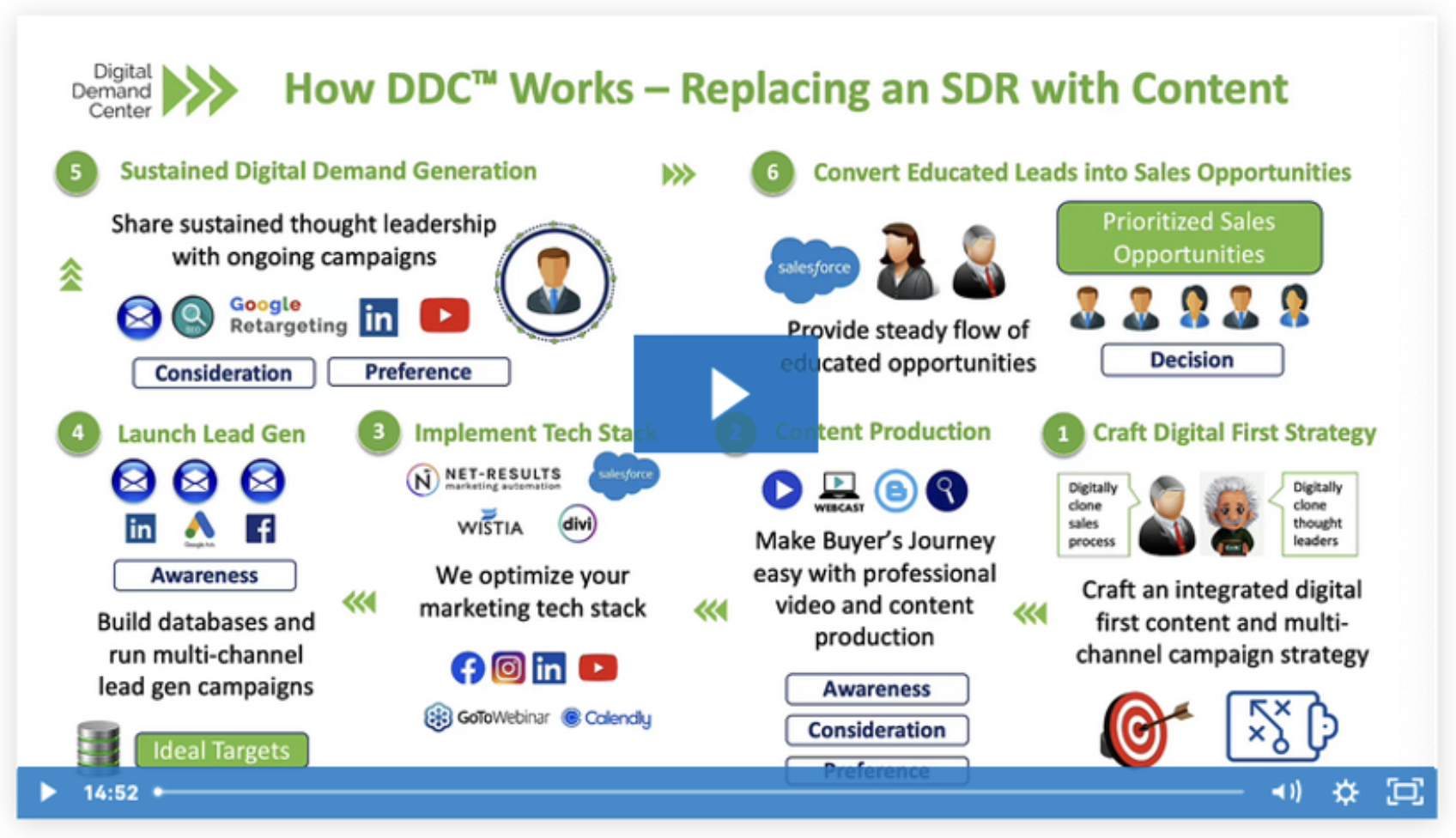
What is Demand Gen for B2B Sales?
This article will explain B2B demand generation and discuss several of the critical steps in required to implement a marketing process to execute successful demand gen for B2B sales.
B2B demand generation refers to the strategies and tactics employed by businesses to create brand or product awareness, generate interest, and cultivate demand for their products or services among other businesses or organizations. Simply, demand generation is a series of proactive strategies to accelerate business growth.
The goal of B2B demand generation is to attract and engage potential customers by utilizing multiple marketing channels, driving leads to take actions that move them along the sales funnel and eventually convert them into customers.
What is B2B Demand Generation?
(watch time – 90 seconds)
Key Aspects of B2B Demand Generation
Here are some key aspects of B2B demand generation:
Targeted audience identification: Clearly define your target market and identify the specific businesses or organizations that are most likely to benefit from your offerings. This helps in tailoring your demand generation efforts towards reaching the right audience.
Content marketing: Develop and distribute high-quality content that educates, informs, and adds value to your target audience. This can include blog posts, white papers, case studies, videos, infographics, and webinars. The content should address the pain points and challenges faced by your target audience and showcase how your products or services can provide solutions.
SEO and online visibility: Optimize your website and content for search engines to improve your organic visibility and attract potential customers who are actively searching for relevant information. Conduct keyword research, optimize on-page elements, and build quality backlinks to improve your search engine rankings.
Paid advertising: Utilize paid advertising channels such as search engine advertising (e.g., Google Ads), social media advertising, or display advertising to increase your brand’s visibility and reach. Target your ads based on relevant keywords, demographics, job titles, or specific industries to ensure you reach your desired audience effectively.
Account-based marketing (ABM): Implement ABM strategies that focus on targeting specific key accounts or high-value prospects. ABM involves personalized outreach and marketing efforts tailored to the needs and preferences of individual target accounts, helping to build relationships and drive demand.
Email marketing: Build and nurture an email subscriber list of potential customers and regularly send targeted email campaigns. Segment your email list based on various criteria such as industry, job role, or level of engagement to provide personalized content and offers that resonate with each segment.
Social media engagement: Leverage social media platforms such as LinkedIn, Twitter, or industry-specific communities to engage with your target audience, share relevant content, participate in discussions, and build relationships. Use social listening tools to monitor conversations and identify opportunities to engage with potential customers.
Webinars and events: Host webinars, virtual events, or participate in industry conferences to showcase your expertise and provide valuable insights to your target audience. These platforms allow you to engage directly with potential customers, answer their questions, and build credibility.
Lead capture and nurturing: Implement lead capture mechanisms on your website, such as forms or gated content, to collect contact information from potential customers. Once you have captured leads, employ lead nurturing strategies to build relationships, provide relevant content, and guide them through the buying process.
How Digital Demand Center Automates Lead Nurturing
(watch time – 6 minutes)
Analytics and optimization: Continuously track and measure the performance of your demand generation efforts. Use analytics tools to monitor key metrics such as website traffic, conversions, email open rates, click-through rates, and engagement levels. Analyze the data to identify areas of improvement and optimize your strategies accordingly.
A comprehensive B2B demand generation strategy allows your business to effectively attract, engage, and convert potential customers, driving business growth and success.



